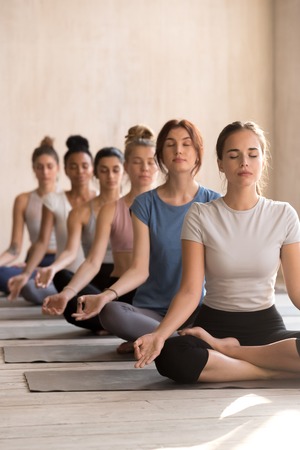Embracing Holistic Recovery in Indian Sports
India has a rich heritage of traditional wellness systems that have supported physical and mental health for centuries. Today, the Indian sporting community is increasingly recognising the importance of a holistic approach to athlete recovery, combining ancient wisdom with modern science. Holistic rehabilitation for athletes goes beyond mere injury treatment; it integrates body, mind, and spirit to promote sustainable well-being and peak performance. In this context, Yoga and Ayurveda serve as pillars of recovery, offering time-tested methods for healing and rejuvenation. When synergised with contemporary sports science—such as physiotherapy, nutrition, and biomechanics—these disciplines create a comprehensive framework tailored for Indian athletes. This integrative method respects local values and traditions while embracing global best practices, ensuring that sports professionals receive care rooted in both cultural authenticity and scientific efficacy.
2. The Role of Yoga in Sports Rehabilitation
India’s ancient tradition of yoga has evolved into a cornerstone of sports rehabilitation, offering athletes a unique pathway to holistic recovery and performance enhancement. In the Indian sporting landscape, yoga is not merely a form of physical exercise but a multifaceted discipline that interweaves physical, mental, and spiritual well-being. Let us explore how traditional and contemporary Indian yoga practices, asanas, and pranayama techniques are integrated into athlete recovery protocols for injury prevention, flexibility, and mental resilience.
Traditional Indian Yoga Practices for Athletes
Practices such as Hatha Yoga, Ashtanga Yoga, and Iyengar Yoga have long been part of India’s heritage. These styles focus on precision, alignment, and deep engagement with breath—elements crucial for an athlete’s rehabilitation journey. Contemporary adaptations often blend these classical approaches with modern physiotherapy techniques to suit the dynamic needs of sportspersons in India.
Essential Asanas for Injury Prevention & Flexibility
The following table highlights key asanas commonly recommended by Indian sports physiotherapists and yoga gurus for athletic wellness:
| Asana (Pose) | Benefits for Athletes |
|---|---|
| Tadasana (Mountain Pose) | Improves posture & core stability |
| Trikonasana (Triangle Pose) | Enhances lateral flexibility & balance |
| Virabhadrasana (Warrior Series) | Boosts lower body strength & mental focus |
| Setu Bandhasana (Bridge Pose) | Promotes spinal mobility & glute activation |
| Adho Mukha Svanasana (Downward Dog) | Stretches hamstrings & calves; relieves tension |
Pranayama: Breathwork for Recovery & Resilience
Indian athletes are increasingly incorporating pranayama—the art of conscious breathing—into their training regimens. Techniques such as Anulom Vilom (Alternate Nostril Breathing), Bhramari (Bee Breath), and Kapalbhati are widely practised for their scientifically proven benefits:
| Pranayama Technique | Main Benefits |
|---|---|
| Anulom Vilom | Balances nervous system; reduces stress hormones |
| Bhramari | Calms the mind; improves concentration under pressure |
| Kapalbhati | Cleanses respiratory system; boosts energy levels |
Mental Resilience Through Mindful Movement
The integration of yoga into sports recovery goes beyond the physical. Mindfulness cultivated through yogic practices helps Indian athletes build inner strength to cope with setbacks and perform consistently at the highest level. Regular sadhana not only aids tissue repair but also fosters patience, discipline, and self-awareness—qualities revered in Indian sporting culture.

3. Ayurvedic Approach to Healing and Recovery
Ancestral Wisdom for Modern Athletes
Ayurveda, India’s ancient science of life, offers a time-tested framework for holistic athlete recovery. Rooted in the balance of body, mind, and spirit, Ayurveda views each athlete as unique, prescribing personalised recovery protocols based on individual constitution or Prakriti. This customisation is particularly vital in sports wellness, where every player’s needs differ according to their dosha—Vata, Pitta, or Kapha.
Dietary Suggestions: Eating According to Your Dosha
Athletes are encouraged to consume Sattvic foods—fresh fruits, vegetables, whole grains, nuts, and seeds—to boost energy and promote healing. For Vata types prone to dryness and injury, warm cooked foods with ghee are recommended. Pitta athletes benefit from cooling foods like cucumber and coconut water to manage inflammation. Kapha types thrive on lighter fare with spices such as ginger and black pepper to stimulate metabolism and prevent sluggishness.
Herbal Remedies for Sports Recovery
Ayurveda prescribes potent herbs that aid athletic healing. Ashwagandha is widely used to reduce stress and enhance stamina, while Bala strengthens muscles and joints. Tulsi (Holy Basil) supports immune function, crucial during intense training periods. Traditional Indian herbal oils like Mahanarayan Tailam are massaged onto sore areas to relieve muscle fatigue and promote flexibility.
Panchakarma Therapies: Deep Cleansing & Rejuvenation
The Panchakarma system is Ayurveda’s signature detoxification therapy, often adopted by Indian athletes during off-season or after major competitions. Treatments such as Abhyanga (herbal oil massage), Basti (medicated enema), and Swedana (herbal steam therapy) eliminate toxins (Ama) and restore balance. These therapies not only accelerate recovery but also help prevent chronic injuries by maintaining optimal tissue health.
Cultural Integration & Long-Term Wellness
Ayurvedic methods are deeply woven into Indian sporting culture—from cricket teams consulting Ayurveda doctors to kabaddi players using herbal poultices for sprains. By embracing these indigenous practices, athletes experience faster healing, fewer injuries, and enhanced longevity in their sports careers—all while staying connected to India’s holistic wellness heritage.
4. Integration of Yoga and Ayurveda with Sports Medicine
Bridging Tradition with Modern Rehabilitation
India’s sporting success stories are increasingly shaped by the integration of Yoga and Ayurveda with contemporary sports medicine. By blending ancient Indian wellness practices with evidence-based rehabilitation, athletes benefit from both physical and mental recovery. This holistic approach not only enhances performance but also fosters long-term well-being—a philosophy rooted in Indian tradition and now validated by modern science.
Best Practices for Seamless Integration
| Wellness Tradition | Modern Protocol | Synergistic Practice | Real-life Example |
|---|---|---|---|
| Yoga Asanas (Postures) | Physiotherapy Mobility Drills | Dynamic stretching routines pre/post training | PV Sindhu uses Surya Namaskar as warm-up alongside physio-recommended joint mobilisation |
| Pranayama (Breathwork) | Pulmonary Rehabilitation Techniques | Controlled breathing to improve lung capacity post-injury | Bajrang Punia incorporates Nadi Shodhana in respiratory rehab after intensive wrestling matches |
| Ayurvedic Herbal Oils | Sports Massage Therapy | Abyanga (herbal oil massage) before deep tissue physiotherapy sessions | Sachin Tendulkar used Mahanarayana oil massages for quicker muscle recovery during cricket tours |
Cultural Relevance and Athlete Compliance
The use of familiar Indian wellness elements increases athlete acceptance and compliance. For instance, physiotherapists in Bengaluru often recommend yoga nidra for cricketers recovering from stress fractures, recognising both its restorative potential and cultural resonance.
Case Study: Integrative Recovery after Injury
Kabaddi player Ajay Thakur suffered a severe ankle sprain during Pro Kabaddi League. His rehab protocol included RICE (Rest, Ice, Compression, Elevation), followed by Ayurvedic lepa (herbal paste application) to reduce swelling. Simultaneously, his physio integrated gentle yogic stretches and pranayama to restore mobility and mental calmness—accelerating his return to play and minimising recurrence risk.
Collaborative Approach among Practitioners
The best outcomes are achieved when sports physios and traditional healers work hand-in-hand. Regular interdisciplinary meetings at sports academies like Gopichand Academy in Hyderabad ensure that each athlete’s protocol is customised—balancing ancient wisdom with cutting-edge therapy for optimal rehabilitation.
5. Building Athlete Wellness in Indian Sporting Communities
Establishing Holistic Recovery Programs
To foster true athlete wellness in India, it is vital to design recovery programs that integrate the wisdom of Yoga and Ayurveda with modern sports science. Sporting academies and clubs should develop structured routines that combine asanas (postures), pranayama (breathwork), Ayurvedic nutrition, and mental conditioning into their daily schedules. These programs must be customizable, respecting individual prakriti (body constitution) and sport-specific demands. By doing so, recovery becomes a proactive process, reducing injury rates and improving long-term performance for athletes at all levels.
Leveraging Local Resources & Professionals
India is home to a rich heritage of traditional wellness experts—yoga acharyas, ayurveda vaidyas, and meditation gurus—who can play a pivotal role in athlete rehabilitation. Collaborating with these practitioners allows sporting communities to offer authentic treatments such as abhyanga (therapeutic massage), herbal therapies, and personalized yogic routines. Further, integrating local resources like Ayurvedic herbs, indigenous foods, and natural healing spaces creates a culturally rooted recovery environment. Partnerships with institutions like Morarji Desai National Institute of Yoga or state Ayurveda colleges can ensure professional guidance and credibility.
Promoting a Wellness Culture in Sports Academies
Cultivating a culture of holistic wellness goes beyond program implementation; it requires mindset transformation among athletes, coaches, and management. Workshops on stress management, sleep hygiene, sattvic diet principles, and mindfulness must be regular features in academies’ calendars. Celebrating International Yoga Day or Ayurveda Day with community events reinforces the value of traditional practices. Encouraging open conversations about mental health destigmatizes emotional struggles often faced by sportspeople. By embedding these values in everyday training, Indian sports academies can nurture not just physically strong but also mentally resilient athletes.
Building Sustainable Wellness Models
To ensure continuity and impact, sporting organizations should document recovery protocols, measure outcomes, and share success stories within the wider Indian sports ecosystem. Creating peer support groups—like “Yoga Circles” or “Ayurveda Corners”—fosters knowledge exchange among athletes and staff. Leveraging digital tools for virtual consultations with wellness experts makes holistic care accessible even in remote areas.
Towards a Healthier Sporting Nation
By rooting athlete recovery in the holistic traditions of Yoga and Ayurveda while harnessing local expertise, Indian sporting communities can set new benchmarks for sustainable performance and well-being. This approach not only honours India’s cultural legacy but also empowers athletes to thrive both on and off the field.
6. Success Stories and Future Pathways
Inspiring Journeys: Indian Athletes Embracing Holistic Recovery
Across the length and breadth of India, athletes and coaches are discovering the transformative potential of Yoga and Ayurveda in their sports rehabilitation journeys. Take for example P.V. Sindhu, who credits her yoga practice for enhancing her focus, flexibility, and resilience on the badminton court. Similarly, cricket legend Virat Kohli has often spoken about how adopting Ayurvedic principles in his diet and lifestyle brought a new dimension to his physical fitness and mental clarity.
Coaches Championing Change
Indian sports coaches are also integrating holistic methods into training regimens. Coach Gopichand’s badminton academy is known for blending traditional yogic breathing techniques with modern strength conditioning, helping athletes recover faster from injuries and avoid burnout during rigorous schedules. Their success stories are motivating younger generations to embrace these time-tested Indian wellness systems alongside conventional physiotherapy.
The Evolving Landscape of Sports Wellness in India
The shift towards holistic athlete recovery is not just anecdotal but is reflected in the evolving infrastructure of Indian sports wellness. More rehabilitation centres across major cities like Bengaluru, Mumbai, and Delhi now offer specialised programs combining yoga therapy, Ayurvedic massages, herbal supplementation, and personalised nutrition plans. National-level sports authorities are also promoting research on Ayurveda-based interventions to support injury prevention and performance optimisation.
Paving the Way Forward
With increasing scientific validation and government support, Yoga and Ayurveda are becoming integral to the Indian sporting ecosystem. The journey ahead involves deeper collaborations between traditional healers, sports scientists, physiotherapists, and athletes. As India aspires to shine brighter on global sporting stages, holistic approaches rooted in its own cultural wisdom promise a future where athletes recover faster, perform better, and enjoy lifelong wellness.

